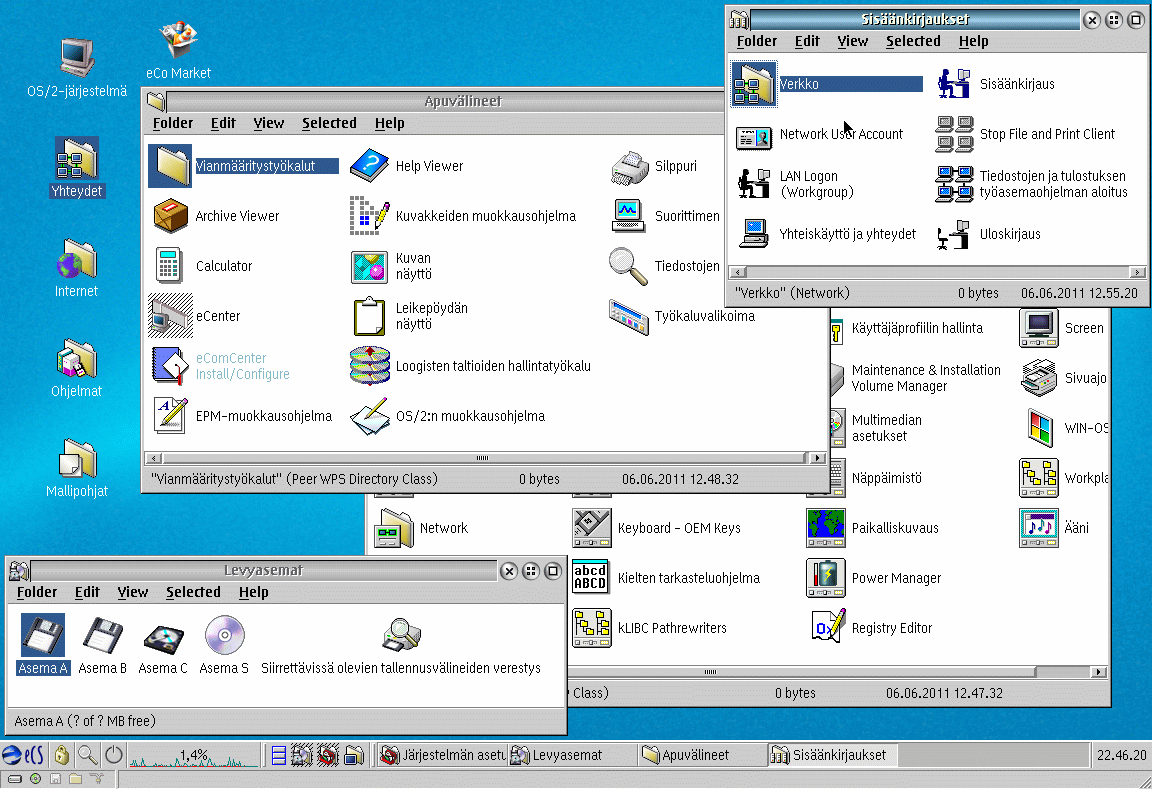Ecomstation 22 Iso Download

This eCS eComStation 2.2 beta II is done to test that most issue's with USB. This product is provided as a downloadable ISO file. Cannot Boot from eCS 2.2 Beta DVD. And I want to install eComStation on it. Who said to download the eCS 2.2 Beta ISO file, and burn it to a.
EComStation Screenshot,,, and other various developers OS family Working state Inactive Source model 2.1 / May 20, 2011; 7 years ago ( 2011-05-20) with components Official website eComStation or eCS is a PC based on, published by and and currently owned and developed by XEU.com. Atlante di anatomia netter pdf download free apps for windows 7. It includes several additions and accompanying software not present in the version of the system. EComStation is a 32-bit operating system which runs exclusively on the processor architecture (real or ) and is still used as of 2018. Contents • • • • • • • • • • • • • • • • • • • Differences between eComStation and OS/2 [ ] Version 1 of eComStation, released in 2001, was based around the integrated OS/2 version 4.5 client Convenience Package for OS/2 Warp version 4, which was released by IBM in 2000. The latter had been made available only to holders of existing OS/2 support contracts; it included the following new features (among others) compared to the final retail version of OS/2 (1996's OS/2 Warp version 4): • IBM-supplied updates of software and components that had shipped with the 1999 release of OS/2 Warp Server for e-business, but had not been made available to users of the client version.
Key among these were the and the. • Operating system features and enhancements that had been made available as updates but never offered as an install-time option. These included an updated, a 32-bit stack and associated networking utilities, a, updated drivers and other system components, newer versions of, SNAP Graphics video support, and more. • IBM-supplied updates that had previously only been offered to customers with maintenance contracts, such as support and a new stack.
EComStation provided a retail channel for end users to obtain these updates. In addition, from the beginning it bundled a number of additional features and enhancements, including (but not limited to): • Value-added applications, including the Lotus office suite, IBM's Desktop On-call remote-control software, and more. • Utilities and drivers licensed from third parties including scanner support and drivers for multiple serial cards, as well as enhanced storage drivers developed. • A number of features from OS/2 Warp 4 which IBM had omitted from the Convenience Package release, such as voice navigation and dictation, • System improvements developed by Serenity itself including a new installer, various user interface enhancements, system configuration changes, and a rapid deployment system based on Serenity Managed Client. • Open source utilities from the Unix world. • A number of small utilities and drivers developed by various third parties. As IBM began to wind down OS/2 development, Serenity and its partners began to take up the slack (through a combination of in-house, contract, and community/open source development efforts) in terms of keeping the operating system usable on current hardware.
The results of many of these efforts are included in version 2 of eComStation; among others: • support. • A new generic graphic card driver called Panorama. • A bootable version of. • A 'universal' sound card driver based on. • support (introduced in version 2.1). • On-the-fly resizing of hard drive partitions.

• A new client to access / (Windows-style) LAN resources (supporting both files and printers) based upon. • Ports of current and for browsing and email. • A port of the office suite.
History [ ] Origins [ ] When it became clear that would not release any new retail version of the OS/2 Warp client operating system after version 4 in 1996, users began to consider other alternatives. IBM released a final version of its server edition, IBM OS/2 Warp Server for e-Business or WSeB, internally called version 4.5. IBM also continued updating the client and merged parts of it with the server, so it was proposed by of Serenity Systems, that an company could and should create its own client, using the existing OS/2 client with IBM enhancements and adding its own improvements where needed. But Serenity as an IBM business partner had done a similar thing with OS/2-based vertical applications like the, a rapid deployment OS based on, and, a managed server based on WSeB. The OS/2 software vendor made such a proposal to IBM in 1999, but it was not followed through by the company.